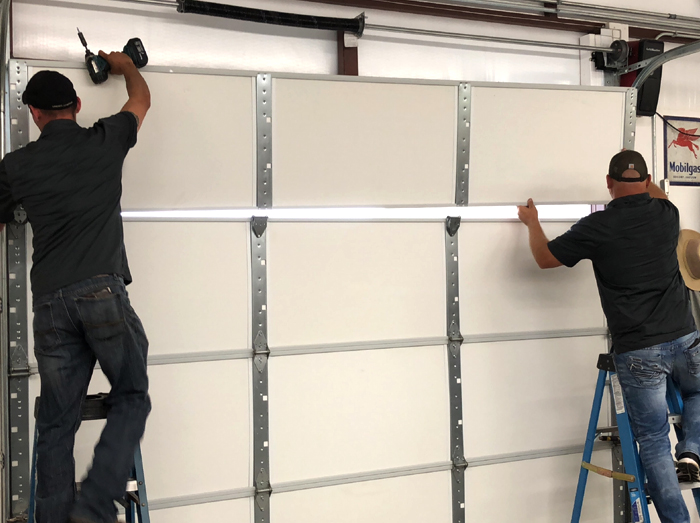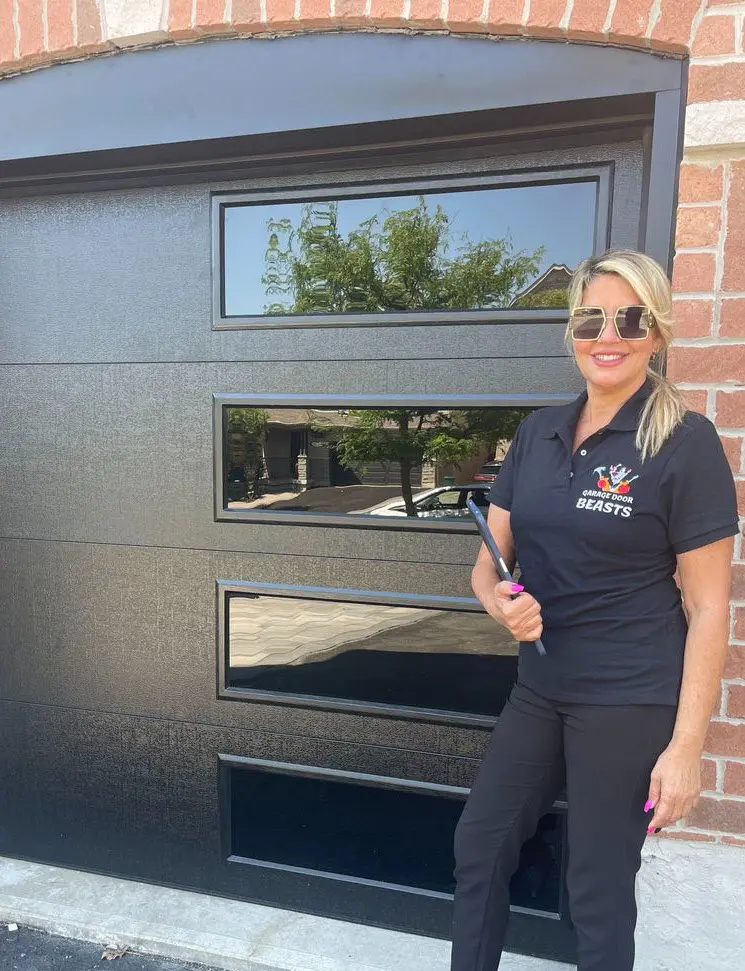Typical Troubles and Solutions for Homeowners With Garage Doors
As a home owner, you could deal with a number of typical garage door concerns that can interrupt your everyday routine. From malfunctioning openers to loud operation, these troubles can be frustrating. The good news is, lots of options are uncomplicated and can save you time and money. Nonetheless, some problems may call for specialist assistance. Allow's explore the most regular garage door troubles and just how you can tackle them efficiently.
Malfunctioning Garage Door Openers
When your garage door opener starts breaking down, it can be discouraging, specifically if you count on it daily. You may find that it doesn't reply to your remote or the door opens up and shuts erratically. Initially, examine the batteries in your remote; weak batteries can cause intermittent problems. If that's not the trouble, evaluate the opener's source of power. Verify it's plugged in and the circuit breaker hasn't stumbled. In some cases, a stuck or filthy antenna can hinder signal function, so give it a quick clean.
If you still experience concerns, seek any signs of endure the gears or electric motor. A defective opener might need lubrication and even a substitute component. Don't wait to consult your customer handbook for repairing tips particular to your model, or consider calling an expert if the trouble lingers. Taking these steps can help restore your garage door's functionality quickly.
Misaligned Garage Door Tracks
If your garage door isn't opening up or shutting smoothly, misaligned tracks may be the offender. Usual causes include damage or accidental bumps that interrupt the placement. Taking care of these track issues can restore your door's function and maintain it running securely.
Reasons of Imbalance
Misalignment of garage door tracks can happen for numerous factors, typically leading to aggravating functional problems. One typical cause is normal wear and tear; gradually, screws and screws can loosen, creating the tracks to shift. If your garage door obtains bumped or struck, that effect can misalign the tracks. Furthermore, modifications in temperature level and humidity can trigger the metal tracks to broaden or agreement, resulting in imbalance. Dirt and particles buildup can likewise block the tracks, pushing them misplaced. Lastly, improper installation can lead to consistent placement issues. Determining these reasons can assist you comprehend why your garage door isn't operating smoothly.
Taking Care Of Track Problems
Fixing track concerns with misaligned garage doors requires a careful approach to assure smooth operation. Test the garage door's operation to confirm it opens up and shuts smoothly. Normal upkeep will certainly assist stop future track issues and keep your garage door working effectively.
Broken Springs
When your garage door suddenly rejects to open or shut, it's commonly as a result of busted springs. These springtimes bear the weight of the door, making it easy for you to lift or reduce it. If they snap, you'll observe that your door feels heavy or will not move whatsoever.
To confirm the issue, aesthetically inspect the springs for voids or breaks. If you suspect they're broken, do not try to fix them yourself, as they're under high tension and can create injury. Rather, call a professional who can safely replace the springs.
Regular upkeep can help protect against springtime failing, so keep an eye on their condition and oil them regularly. If you're experiencing regular springtime issues, think about upgrading to higher-quality springs that can endure more deterioration. This aggressive technique can conserve you time and money in the future, guaranteeing your garage door operates efficiently.
Noisy Garage Doors
After dealing with issues like broken springs, you might discover another typical issue: noisy garage doors. If your garage door squeals, rattles, or groans, it can be quite bothersome, particularly if it's interrupting your tranquility. The sound commonly originates from damaged rollers, loose equipment, or lack of lubrication.
If they're unclean or harmed, cleansing or replacing them can significantly reduce noise. Don't neglect to oil the moving parts with a silicone-based spray or garage door lube.
If your door still seems like a dinosaur, think about getting in touch with a specialist. Normal maintenance can protect against noisy garage doors and prolong their life expectancy, ensuring you appreciate a quieter, smoother operation.
Garage Door Remote Issues
Several homeowners experience irritation with garage door remote issues eventually. If your remote isn't functioning, the primary step is to examine the batteries. Weak or dead batteries are often the offenders. Change them and see if that resolves the problem. If the remote still won't work, attempt reprogramming it. Consult your garage door opener handbook for certain directions.
Often, interference from other electronic devices can impact your remote. Inspect for any kind of nearby tools that could be causing a signal interruption. If that does not help, examine the remote for physical damage, like splits or busted buttons.
Another typical issue is range; you might simply be also far from the garage door. Make certain you're within variety when attempting to run it. If all else stops working, take into consideration calling a professional for support. They see here now can identify and repair any kind of he has a good point hidden problems with your garage door system.
Weather Condition Stripping Problems
If you discover drafts, water leaks, or boosted energy bills, your garage door's climate removing could be used out. Recognizing how to spot indications of wear and understanding setup pointers can assist you maintain a correct seal - garage doors nanaimo. When it's time for a replacement, you'll have lots of options to pick from
Indications of Put On
As you use your garage door over time, the weather condition stripping can start to reveal indications of wear, which is vital to resolve. If you discover the stripping is weak or tearing away from the door, it's time to take action. You could also locate that your garage door does not seal effectively, leading to boosted energy expenses or bug issues.
Installation Tips
When you observe wear on your garage door's weather stripping, resolving the basics installment can make a considerable difference. Confirm you have the best kind of weather removing for your garage door. Measure the door precisely to cut the removing to the suitable size. Clean the surface area where you'll apply the weather condition stripping, getting rid of any type of dust or debris to ensure a strong bond. Make use of a top notch adhesive or follow the supplier's instructions for installment. Ensure it's straightened appropriately to secure spaces successfully. On a regular basis examine the installment for any indications of damages or detachment. By focusing on these details, you'll enhance your garage door's insulation and secure your home from the elements.
Replacement Options
While you might have mounted your garage door's weather removing appropriately, damage can still cause troubles that require substitute. If you discover drafts, moisture, or insects entering your garage, it's time to consider brand-new weather stripping. Seek alternatives like vinyl or rubber materials, which offer far better insulation and resilience. Action your door's dimensions precisely to assure an appropriate fit, and select self-adhesive strips for very easy setup. If you favor an even more durable option, consider hiring a professional to mount a new threshold seal. Routinely inspecting and changing climate stripping not only boosts your garage's power efficiency however likewise safeguards it from damages. Don't wait until you face bigger problems-- act currently!
Sensor Malfunctions

Beginning by inspecting the sensing unit positioning. Make sure both sensing units face each various other and are degree.
If the sensors show up intact yet the door still won't close, it could be time to replace them. You can locate compatible sensors at your neighborhood hardware shop. Simply keep in mind to adhere to the producer's guidelines for installation. With a little troubleshooting, you can normally deal with sensing unit concerns and get your garage door functioning efficiently again.
Regularly Asked Questions
Exactly how Frequently Should I Preserve My Garage Door System?
You should preserve your garage door system at the very least twice a year. Routine look for wear, lubrication of moving components, and adjusting the tracks can keep it operating efficiently and extend its life expectancy significantly.
Can I Mount a Garage Door Myself?
Yes, you can install a garage door yourself, yet it requires cautious preparation and the right devices. Ensure you adhere to the manufacturer's directions very closely and consider security preventative measures to stay clear of accidents during installation.
What Is the Average Life Expectancy of a Garage Door?
The standard life expectancy of a garage door is typically 15 to 30 years, depending on materials and upkeep. If you look after it well, you can optimize its long life and enjoy reputable efficiency.

Exactly how Do I Choose the Right Garage Door?
When you pick the ideal garage door, think about materials, design, and insulation. Believe about your home's style, budget plan, and maintenance demands. Don't fail to remember to inspect local laws and energy efficiency rankings for suitable performance.
Exist Energy-Efficient Garage Door Options Available?
Yes, there are energy-efficient garage door alternatives readily available. You can select insulated doors, which aid preserve your garage's temperature, or seek designs with a high R-value to enhance power effectiveness and reduce energy prices.